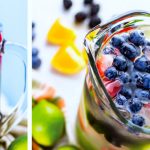6 practical tips to help you improve your health
Not long ago, a good friend of mine told me about “Everyday Health Guide: 365 Tips for Healthy Living”. Since the internet abounds in information about treatments and healthy eating, at the beginning I did not let myself get carried away by my friend’s enthusiasm. However, after browsing through it (out of mere curiosity), I realized it was an indispensable guide for each of us.
Unlike other guides, it brings up dozens of usual problems affecting our health and presents solutions within anyone’s grasp.
Did you know, for instance, that seafood could cause headaches? Did you know that your diet should consist mainly in almonds and carrots if you want to get rid of gastric inflammation?
This is the first in a series of five articles where I will present you as many tips meant to help you take care of your health as I can select from this guide. It may sound like a cliché, but there is plenty of truth in the old saying: “Good health is above wealth”.
Tip 1. Colour therapy
Usually we bother our heads about colours when we plan to decorate our homes or to renew our wardrobe. Well, colours can also influence our health. Colour therapy, also known as chromotherapy, rests on the ability of our psychological and organic functions to respond to certain colours. All those who suffer from nervous tension, ulcers, sexual dysfunctions, frequent colds or cancer should consider colour therapy. A good start is to release all the tension you have piled up, and the best method is exposure to the color green.
Light spectrum includes seven basic colours: violet, indigo, blue, green, yellow, orange, and red (VIBGYOR, for short).
In order to improve your health, you can also eat green fruits and vegetables: lettuce, spinach, mango, green beans and gooseberries.
Tip 2. Go for the “recovery” diet!
At the end of a treatment, during the recovery period, a quick way to get on our feet again is to adopt a mostly raw diet. Let us take as an example the recovery diet after a tonsillitis treatment. For the next three or four days, the patient should eat only fruits: apples, grapes, grapefruit, oranges, pears, pineapple, peaches and melon. In addition, since it is a condition affecting the throat, fresh pineapple juice, a genuine naturopathic remedy for such ailments, is highly recommended. After the four days of all-fruit diet, the patient may return to a balanced diet consisting, for instance :
Breakfast: Fresh fruit, raw grated carrot or any other raw salad, and milk. You may add prunes or other dried fruits.
Lunch: Steamed vegetables and whole wheat bread.
Dinner: A large raw salad of cabbages, mung beans, alfalfa sprouts, wholegrain bread, butter and cottage cheese.
To speed up the recovery process, a special juice made of carrots (three parts), and beet and cucumbers (one part each) is recommended. You may combine them or drink them as separate juices.
Check-out our article about the power of natural juices here.
Tip 3. Take lecithin to stay young!
Lecithin is typically associated with improved memory skills, as we usually take lecithin when we have to cope with the challenges of an examination period. However, as various scientific studies reveal, lecithin also helps us stay young as much as it helps maintain the health of our organs.
Besides reducing the blood cholesterol level, lecithin can help repair the damaged cells and organs, on condition that a sufficient amount is present in the body.
In his book “The Years Between 75 and 90”, Edward R. Hewith says that, in old people, fats remain in the blood for longer periods: five to seven hours, and in some cases as long as 20 hours; during this time, the fats make their way to the tissues and settle there. Scientific studies reveal that if an old person takes lecithin before a fatty meal, the fats in the blood will return to normal just as quickly as in a young person.
If you are interested in combining the practical tips offered in this article with a strongly rejuvenating therapy designed to help you keep your body in good shape regardless of your age, please visit the webpage: https://www.technologyforlife.org/product/bio-synergy
Tip 4. Simple remedies: calcium, magnesium and potassium
Less famous than calcium and magnesium, potassium is an element we know little about. Nevertheless, potassium deficiencies are associated with fatigue, insomnia and high blood pressure. Therefore, it is an ally to a healthy heart. The best sources of potassium are nuts and whole grain cereals.
Low levels of calcium may cause nervousness and tension. Dairy products, eggs, almonds and soya are among the most important sources of calcium.
Also referred to as a natural tranquillizer, magnesium is associated with preventing heart disease. Magnesium deficiency may result in irritability and emotional disorders. Its presence in the body is vital to the absorption of calcium and potassium. We find it in fruits, vegetables, seeds and prunes.
Tip 5. Fibres: allies of a healthy heart
Numerous scientific studies have shown that people who eat fibres on a daily basis have no problems with their cholesterol levels and, therefore, will not develop heart disease. Fibres not only keep the good (HDL) cholesterol levels high, but they also lower the levels of the bad cholesterol, LDL, which is associated with heart disease. The main sources of dietary fibres are unprocessed wheat bran, whole grain cereals (wheat, rice, barley and rye), leguminous plants (potatoes, carrots, beet, and turnips), fruits (mango, guava) and green vegetables (cabbage, lettuce, celery).
Of all the fibre sources, oat bran is especially helpful in lowering the LDL cholesterol. In order to get the expected results, make sure you consume 30 grams of oat bran every day, for 30 days.
Tip 6. Cold compresses: a trusted aide in fighting inflammations
A cold compress can reduce any inflammation. To that effect, take a piece of gauze or a clean cloth, dip it into ice water and then apply it to the areas where inflammations occur most frequently: the head, the neck, the abdomen or the back.
According to the guide, “the cold compress is an effective means of controlling inflammatory conditions of the liver, spleen, stomach, kidneys, intestines, lungs, brain, pelvic organs and so on. It is also advantageous in cases of fever and heart disease. The cold compress soothes irritations of the dermis and inflammations of external portions of the eye. When the eyeball is affected, the cold compress should follow a short fomentation”.
Source: Everyday Health Guide: 365 Tips for Healthy Living, A Practical Daily Reference to The Nature Cure Using Foods, Vitamins, Minerals, and Food Supplements For Vibrant Health and Complete Freedom from Disease
You also may want to read: Alkalization: A Way of Regaining and Maintaining Ideal Health

This work is licensed under a Creative Commons Attribution-NonCommercial-NoDerivatives 4.0 International License.

 Previous Post
Previous Post Next Post
Next Post



